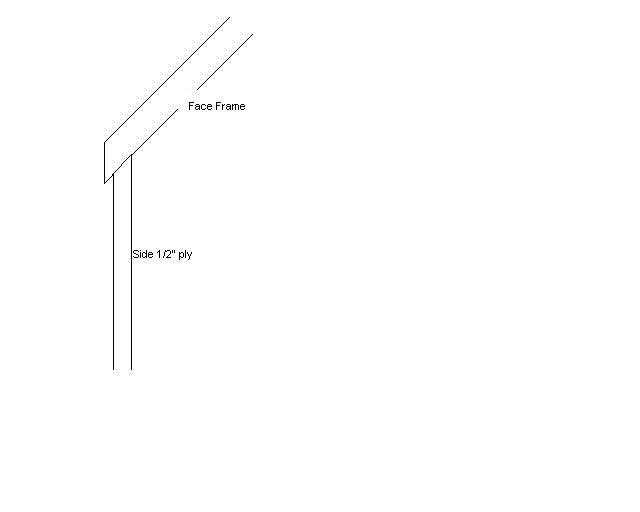Disposing of Cabinetmaking Waste
Once your volume gets high, disposing of waste (and reducing it) becomes a priority. Here's a discussion. August 19, 2013
Question (WOODWEB Member) :
I own a 5,000 square foot shop that operates 16 of the 24 hours in a day, 6 days a week. It has taken years to get to this point, and when we were a smaller outfit, just outside of the city limits, we had the luxury of burning all of the shop waste. We run through 3 to 4 units of plywood and 3,000 board feet of material per week. Burning the material has become increasingly dangerous, and I fear detrimental to the environment. I have looked into dumpsters, but they want $500.00 per drop off/pick up. I estimate this would incur an additional $2K/month. Has anyone had luck with incinerators? If so, where did you find one? What is cost of acquiring? Cost of operating?
Forum Responses
(Cabinetmaking Forum)
From contributor L:
What about getting wood burning furnaces? That can help you out with winter heating costs. In the summer, just don't turn the blowers on.
From contributor J:
I have a 3 cubic yard trash dumpster that I have dumped once a week. Had a bigger one until business slowed a couple years ago. Cost 65.00 a month and includes emptying every Tuesday. They take whatever you can put in it except tires or oil. Sometimes I use some scrap sideboards for a couple of feet extra height if I have a lot in one week. I do buy the driver's lunch if I happen to be at the shop just to keep the friction down. Sometimes he will hit me twice in one week as they pick up a restaurant next door on Thursday.
From contributor L:
My 3 yard dumpster is $60 a month. It's dumped once a week.
From contributor N:
A buddy of mine works in a big cabinet shop and they take everything and anything that burns and put it on a skid, shrink wrap it, and fork lift it into some type of incinerator that heats their shop.
From contributor M:
I have a 6 yard dumpster, 42 bucks taxes in per dump. My shop is outside of the city in the country. I can't run to the dump for that price.
From contributor I:
I'm out in the country and just pile it up and burn it. I do have some people that come by and get some for the fireplace. I have cut way down on my waste the past few years by using the scrap to make small panel mouldings.
From contributor X:
What about a chipper? You could grind it up and sell it. I give all my dust/chips to horse owners. I don't charge them for it. I burn the wood sticks and plywood fall offs.
From contributor T:
What about your own dump trailer or trailers? Then take them to the dump yourself.
From contributor G:
Might sound stupid, but with the cost of plywood and hard stock, the average hobby shop would love to pick it up for free. Make a huge box and get on Craigslist, and advertise free - you might be surprised how people react to free. Also a couple signs on main street to your shop.
From contributor K:
Do you mean you burn the wood as trash or for fuel for the shop? My old employer had a tub grinder and it fed a large furnace to heat the shop, but it did not have any pollution controls. We were a somewhat smaller 12 person shop.
From contributor B:
Don't you have wood recyclers in your area?
From contributor C:
I would contact machinery dealers like Stiles, Machinery Max, X Factory and get educated to what is out there. I'm in California and doubt burning plywood with glue in it would even be allowed, but that's just here. Back in North Carolina, I'm sure it wouldn't have been a problem.
From contributor U:
For what you are spending in disposal costs, you could finance a wood grinder. I would guess waste would be reduced a minimum of 40%. Establishing a waste reduction program should be a focal point of your business plan. My shop is not close to your size and I justified the equipment expense by the labor savings alone. Waste disposal is not going to get any easier or cheaper.
From contributor D:
I have gone through this over the years. The continuum stretches from a small duel fuel furnace that will burn wood, then switch over to oil or gas when there is no wood, all the way to pressurized woodburning boilers that generate electricity and run your electric meter backwards.
Insurance folks don't like the simpler methods, and the guv - EPA and local officials - don't like to hear "incinerator." If it is justified, there are several firms that can set you up with the boiler, equipment and all permits, etc. In 1990, it was close to 200k all in. Also, you needed to have a watchman on premises 24/7 (pressurized vessel laws).
It is common in larger shops and kiln operations, so is certainly not out of the question. Most of these solutions include conveyors and tub grinders as well as storage silos. Scrap is put on conveyors and fed into a grinder that processes it and then on to a storage silo where it is fed into the furnace as needed with a screw conveyor. Lots of safety checks, of course.
